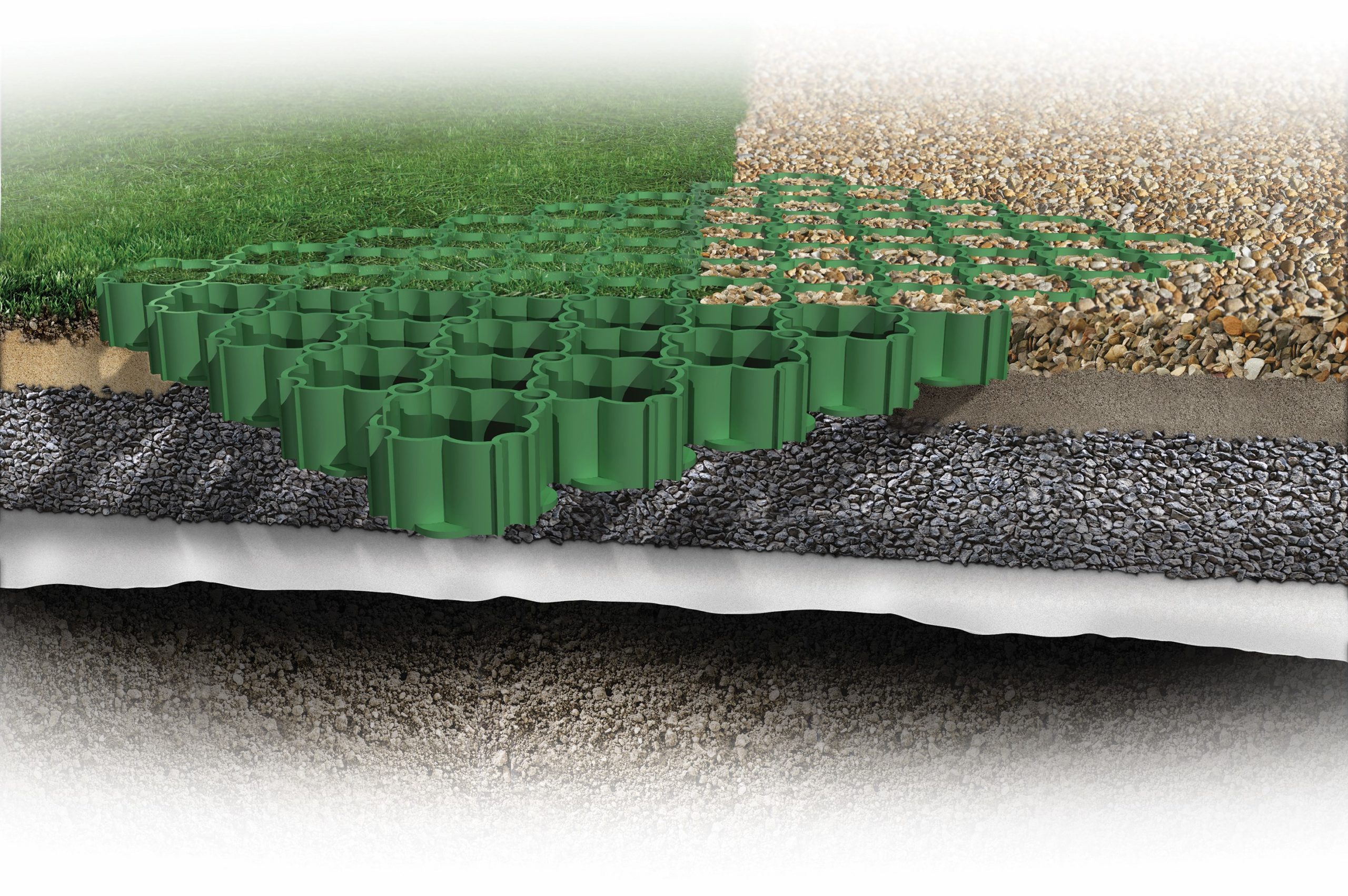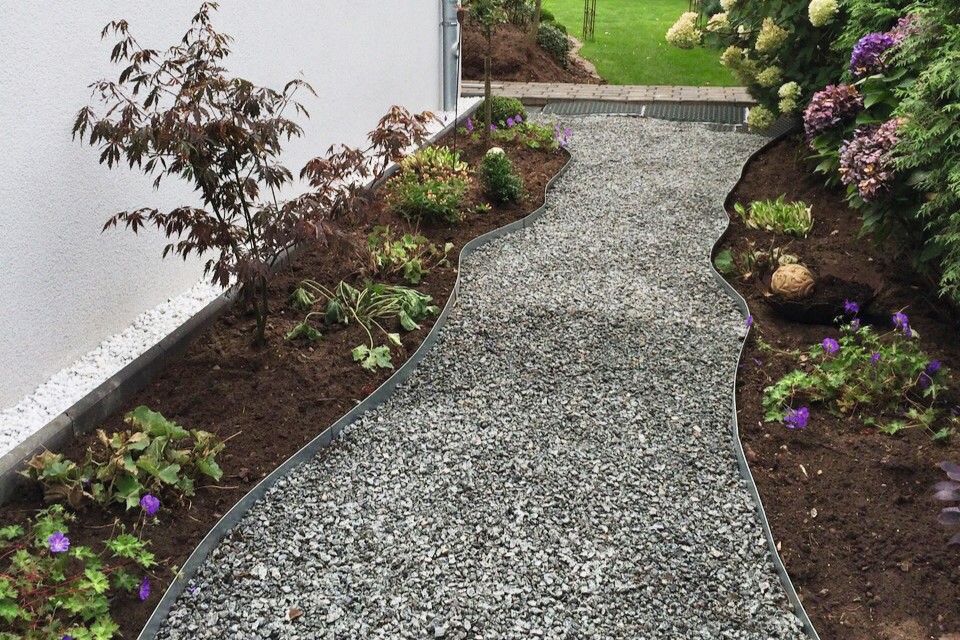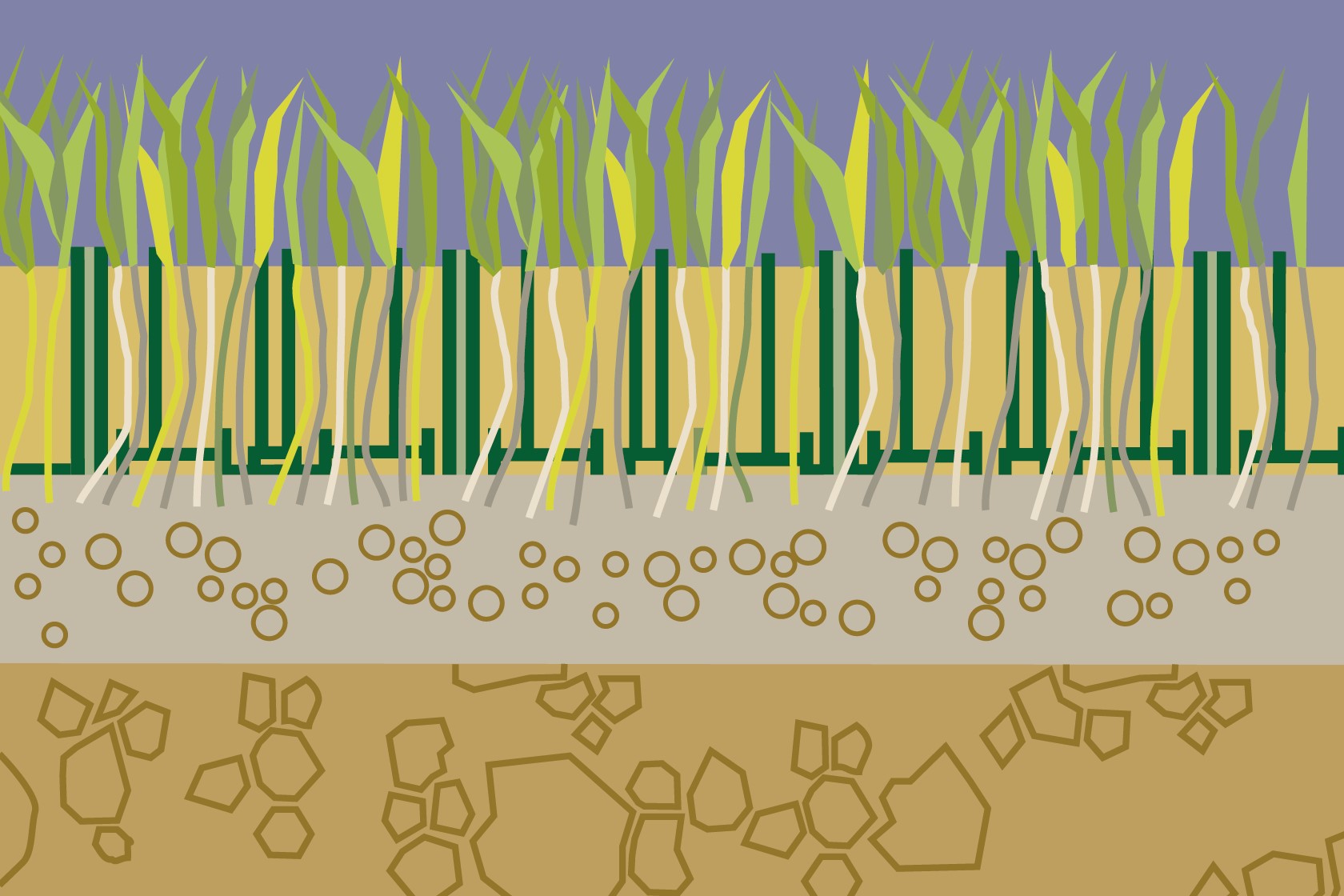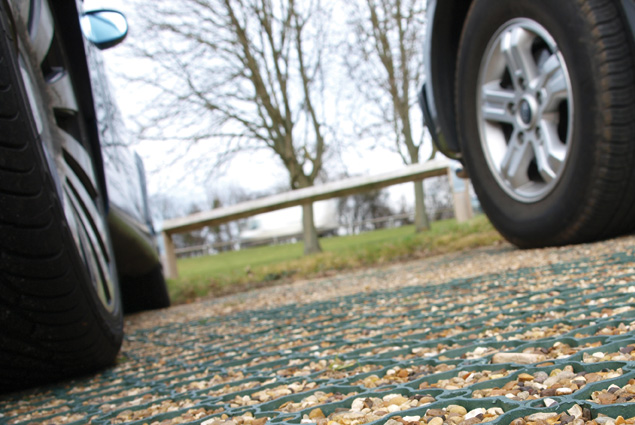
Angus Crichton, House & Garden Marketing Manager at ACO Water Management, discusses what merchants need to know about the principles of good ground reinforcement and what’s required for a successful installation.
For many landscapers and their clients, grass and gravel are firm favourites. The traditional look of a lawn is a long-held classic, while gravel comes in a variety of colours and finishes, offering an individual appearance and a satisfying underfoot crunch.
When regularly traversed, however, grass and gravel can prove problematic. It doesn’t take long for grass to be spoiled by muddy tracks or deep ruts, while gravel is notorious for scattering beyond where it is laid. Gravel can also become an uneven series of troughs and peaks, making it difficult to move a wheelbarrow or push chair, for example.
To address the issue, some homeowners may ask landscapers to install paving. While understandable, paving seals over the rain-absorbing ground. Therefore, merchants can suggest ground reinforcement tiles as an alternative that helps protect the environment, contributing to a sustainable drainage approach to water management.

The gains of ground reinforcement
A clear understanding of how ground reinforcement grids work is needed for merchants to offer support to landscapers. Similarly, knowing why they’re necessary is key to making helpful recommendations.
Ground reinforcement tiles allow landscapers to deliver regularly traversed grass and gravel surfaces that withstand the impact of traffic while maintaining their appearance. The tiles are made of honeycomb grids which, once installed, transfer any load to the sub-base below, protecting grass from damage.
“Merchants can suggest ground reinforcement tiles as an alternative to paving that helps protect the environment, contributing to a sustainable drainage approach to water management.”
As different tiles are designed to withstand different weights, merchants should talk to clients about whether the surface will be traversed by pedestrians or vehicles.
For gravel surfaces, the grids lock the stones in place, preventing scatter and making movement across the surface easier. Due to the size and shape of the grids, as well as their supportive structure, gravel remains undisturbed and smooth when someone with a wheelchair or walking stick moves across it. And because the tiles can be cut to meet the edges of an adjoining surface, they provide a smooth transition from one surface to another — especially important for those who rely on walking aids.
When installed in this way, ground reinforcement tiles allow landscapers to meet the building regulations for people to gain access to buildings — and make it possible for them to offer their clients an increasingly necessary permeable paving solution.

Permeability
Along with keeping grass and gravel protected and in place, ground reinforcement grids allow rainwater to drain through them into the earth below. On the other hand, impermeable paving slabs create runoff, which can enter the sewerage system and contribute to the sewage overflows into our waterways. Given the numerous recent headlines, this is problematic and should be avoided.
That said, paving over front gardens has continued to grow in popularity for many reasons and guidelines were introduced in 2008 that when a new drive is laid or renovated, rainwater must be dispersed on site and not allowed to drain into the road or pavement.
Front-garden paving that cause runoff to discharge into the sewerage system require planning permission. In England and Wales, this applies to paved surfaces over 5m2, while in Scotland, the rule applies to all drives whatever the area. Ground reinforcement grids therefore offer an excellent solution, giving landscapers the option to deliver sustainable drainage while meeting current legislation.
The steps to success
It is the unseen sub-base that does the heavy lifting in any paving project, supporting the weight above while allowing rainwater to drain through. For a project involving ground reinforcement tiles to be successful, it is important that the right layers are correctly placed to ensure stability and longevity.
A sub-base is created by excavating the site and building up layers of MOT Type 3. The sub-base depth depends on the soil type and what sort of traffic is expected cross the surface. Using a free draining aggregate, such as MOT Type 3, is essential for a high level of drainage. This is particularly important if grass is to be sown, while sharp sand or topsoil (for grass) is needed for the laying course.
To keep the layers of aggregate, sand or soil, and the earth beneath separate from one another, a permeable geotextile membrane should be laid below the sub-base and another on top of it. These help each layer remain structurally sound while still providing reliable drainage. If the grids are installed on a slope or likely to be subject to a lot of sideways force — vehicles turning, for example — pegs or nails can be used to secure them, along with a suitable edging product.
ACO offers two ground reinforcement products: GravelGuard and GroundGuard. For gravel surfaces traversed by foot, bike or wheelchair, ACO GravelGuard is recommended. It features a built-in geotextile that keeps the gravel separate from the sand layer beneath.
Where car parking is involved, then ACO GroundGuard is the right choice. It can withstand the weight of vehicles, can be planted with grass or filled with gravel, and can even be used to create parking spaces by inserting available white markers into the grid’s cells.

A crucial element to both solutions is that they provide sustainable drainage, easing some of the pressure on the UK’s overstretched storm drains and helping to protect seas and waterways from sewage overflows. In addition, ACO BorderGuard can be used with both products as an edging solution to prevent the tiles moving sideways.
ACO’s portfolio of ground reinforcement solutions means that merchants can provide landscaping customers with the products necessary to meet their customers’ practical and aesthetic goals. What’s more is that they make it simple to comply with regulations and help look after the environment.
For more on ACO’s ground reinforcement solutions, use the shortcode www.rdr.link/mbd009










